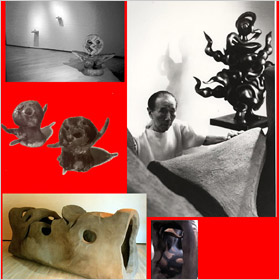 |
|
||||||||||||||
| ふっと突然、思い出したように人の言葉や、作品が頭の中をよぎることがあります。 それはなにげない日常生活の中で、眼鏡を忘れ外へ飛び出し、回りの風景がボーとするとき、思いがけないニュースに出くわすとき、とてもきれいな木を思わず触ってしまったときなど。 そして、ベルリンの壁や社会主義の崩壊、また資本主義も改善を余儀なくされている今。いつも私の前に立ちはだかってくるのは、1986年にこの世を去ったドイツの作家ヨーゼフ・ボイスでした。 私がやりたいのは精神性に反することのない別の経済秩序の発生を促すことです。この発展は世界中のすべての精神史の延長線上にある、神道であれタントラであれ、キリスト教の法則やホピ・インディアが宗教組織と呼ぶものであれ、精神的な源を持 つものは何であれーー。
残された私たちは、好むと好まざるとにかかわらず、ボイスがおこなってきたことを引き継ぐことに忙しい。ますます複雑になっていく現代社会。どこに価値観を置いていけばいいのか。 基本をどこから出発点として考えていけばいいのか、新しい枠を捜していかなければならない。 大地の精神。 この展覧会に参加するリカルド・ブレイ、岡本太郎、ジャクソン・シュルングワニ、三人の作家は、キューバからベルギー、日本、南アフリカと異なる現代をもちながらも、太古の時代から 世界共通にあった精神性を持ち合わせている作家たちです。そして実にあいまいで、はかない、しかし遠く私たちの体のすみに残された記憶を現代的に表現しています。彼らの作品を 通して、大地にしっかりと足をつけていた人々や、その精神性から伝わってくるものを感じ取り、今私たちはアスファルトの上に立ち、今日的な事柄に立ち向かっていくのです。 時として、アーティストの製作過程、文章、生活の場所を知ることは、評論よりの多くのことを伝えることもあります。 このカタログは、ヤン・フート、ディルク・ピュルタウ氏からの文章を頂きました。それ以外は、私の簡素な旅行記のようなエッセイによって構成いたしました。少しでも、この展覧会の主旨に近づいていただくことができればうれしくおもいます。 和多利 浩一
There are times when the words or works of a person cross one‘s mind suddenly, like a memory. This often happens in my daily life, as when I rush out, forgetting to put on my glasses, into the midst of blurred scenery, when I encounterunexpected news, or when I unconsciously touch a beautiful tree. Today, the Berlin Wall has collapsed along with socialism, and capitalism, as well, cannot avoid the tide of change. I am constantly confronted with the presence of the German artist Joseph Beuys, who passed away in 1986.
Whether we like it or not, those of us who remain are busy inheriting the archievements of Beuys. Modern society is becoming more and more complex. Where should we place our value systems? What departure point should we use in considering the basis? We must search for a new framework. The spirit of the earth. The three participating artists, Ricardo Brey, Taro Okamoto, and Jackson Hlungwani, possessing different modernities of Cuba and Belgium, Japan, and South Africa, nonetheless each contain a spirit that has been common to the entire earth ever since prehistoric times. In a contemporary manner, they express memories which are vague and ephemeral, yet which remain deep within our entities. Through their works, we perceive the existence of people who stood with their feet planted firmly on the earth and what is conveyed to us by their spirituality; we, in our turn, must stand our ground atop the asphalt and confront the events of today’s world. At times, the creative process, writings, or dwelling‐place of an artist can communicate more than any commentary. In this catalogue, we have been fortunate to receive texts from Mr. Jan Hoet and Mr.Dirk Pu¨ltau. The remainder of the writing consists of my essays, and could be described as something like a catalogue. I will be more than happy if they can contribute to your understanding of this exhibition. Koichi Watari
|
| 岡本太郎 Taro Okamoto >> |
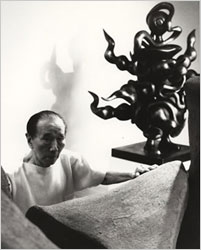 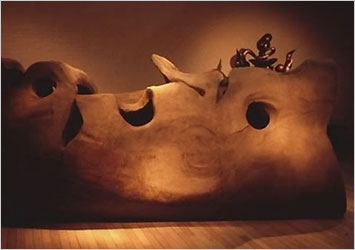 |
| リカルド・プレイ Richardo Brey >> 1955年、ハバナ(キューバ生まれ) 1980年代後半、メキシコやニューヨークで展覧会を開く。 1992年、ドイツ(カッセル)のドクメンタ9で国際舞台へデビュー。 |
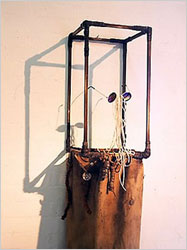 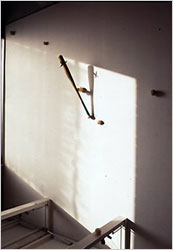 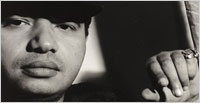 |
| ジャクソン・シュルングワニ Jackson Hlungwani >> はっきりとした記録はないが、1923年トランスバール州生まれ。 少年時代は学校に通わず、父親より木や鉄を使って日用品を作ることを学んだ。 1946年頃から故郷近くの村の石器時代の遺跡に自分のための教会を造り始める。 40年に渡り教会造りの後、1989年ヨハネスブルグでの回顧展、1993年ベエニス・ビエンナーレなどに参加。 |
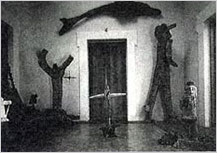 |
